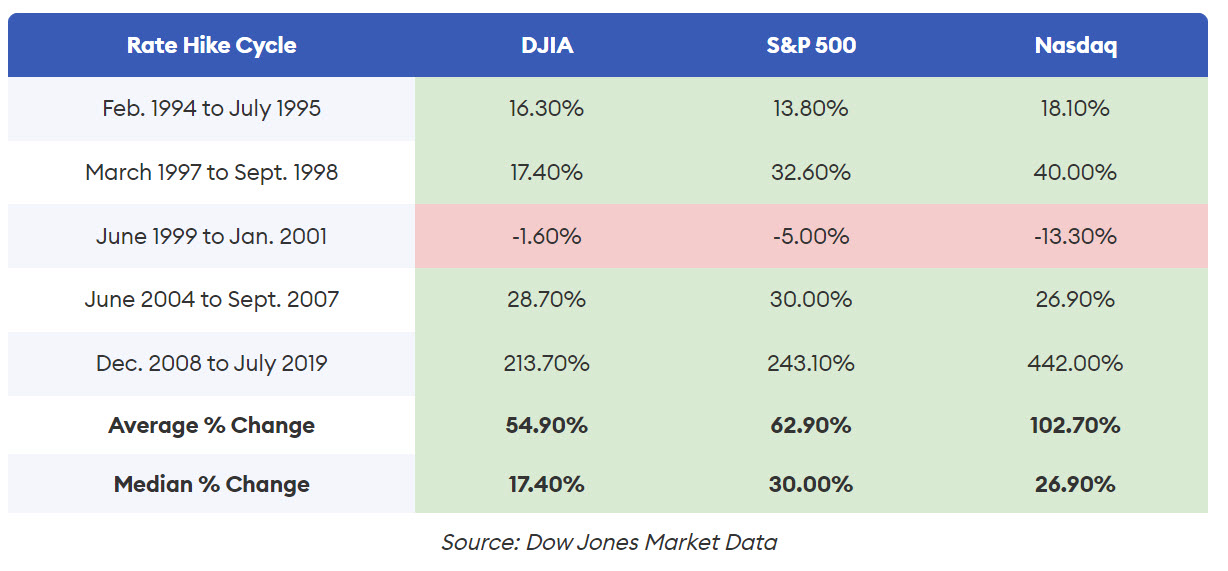
Navigating The Rising Tide of Interest Rate Hikes
The Fed is Waking Up and Is putting its foot on the brakes!
“Hindsight says we should have moved earlier. . . . But there really is no precedent for this.” Fed Chair Powell, March 3, 2022
A long secular bull market compounded by decreasing yields - that came close to zero and negative in some countries - inevitably were going to increase the price of everything...real estate, bonds, stocks, collectables...everything! In addition to a historic low interest environment, the advent of COVID had the Fed putting it's foot on the gas pedal of the printing presses - full throttle - while COVID was putting it's foot on the brakes of the movement of society and the global economy. Just-in-time global inventory systems compounded by shortages in labor and economic uncertainty added more fuel to the inevitable outcome of "supply shortages", "unabating consumer demand" and prices getting out of hand a.k.a "Inflation". A confluence of perfect forces to set "prices on fire" that apparently caught the Federal Reserve off-guard.
The Federal Reserve has woken up and has now changed it's stance, heading full throttle in the direction of raising rates as aggressively as needed to stem inflation and concurrently stopping it's artificial underpinning of the bond markets through it's aggressive purchase of bonds and mortgage bonds. The Fed's $9 Trillion bond acquisition - now on its balance sheet - is moving in reverse as it begins to offload bonds.
The question is who is going to buy them and when, if the primary buyer is no longer in the market? Who will purchase a 2% yielding instrument when inflation is above 7%? The math does not add up. With the largest buyer out of the market and inflation proving more difficult to tame - not helped by war in Ukraine - there is only one logical direction for rates to go if the Fed is serious about tackling inflation - and that is up. How high can rates go? Significantly higher we believe. We are likely entering a new economic period of rising interest rates until either inflation comes into the 2% new-normal Fed benchmark or the economy shows signs of significantly slowing and slipping into a recession. Right now, an aggressive Fed stance is forcing the markets to do the only logical thing and that is sell off stocks and bonds. As interest rates rise, bond prices will fall and real estate prices will likely fall alongside them as demand for mortgage financing inevitably declines.
The markets need to re-calibrate for a new-new economic environment in which rates are rising. The alarm bells continue to sound on Wall Street and stocks are selling off in the wake of market fears of a recession and a hawkish Fed.
However, rising interest rates are not historically a slam dunk for the stock-market to fall and the economy to slip into a rescission. In fact, quite the opposite.
If you examining the chart below courtesy of Dow Jones Market Data you will see that in the last 5 rate hike cycles starting 1994, 4 out of 5 of the cycles saw the markets up during this time period.
Historic evidence suggests that markets can perform well in a rising interest rate environment.
So while the initial reaction to a more hawkish Fed stance is stocks selling off which is certainly in line with the intent of the Fed which is to cool the economy and stem demand for all asset types, including stocks! It is not the Fed's intention to cause a recession but rather to curb demand. It needs to show a stronger intent right now as it lost credibility with it's innacurate assessment of market forces in play and slowness to react. The Fed is facing unenviable and unusual market conditions - some of which are of their own making - and are now having to tackle an economy that is facing "stagflation". Theirs is a fine balancing act.
Another important factor at play is mid-term elections and irrespective of the current economic environment, the perception of the economy and how it is being managed is a significant factor in politics. We dont see the Federal Reserve being too hawkish given this additional factor in the mix.
If you are interested in a no-obligation portfolio riskalyze assessment please email or call us to set up an appointment.


